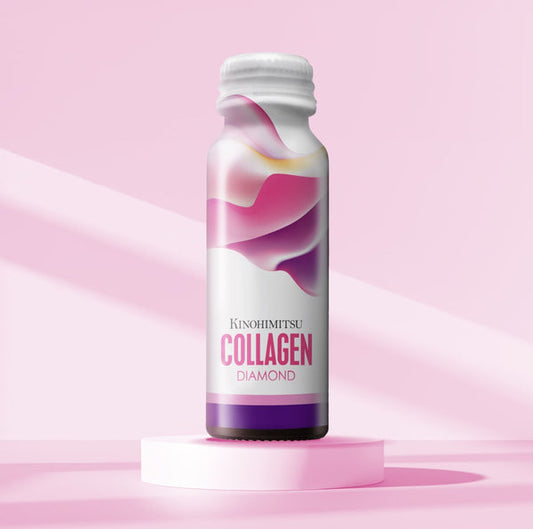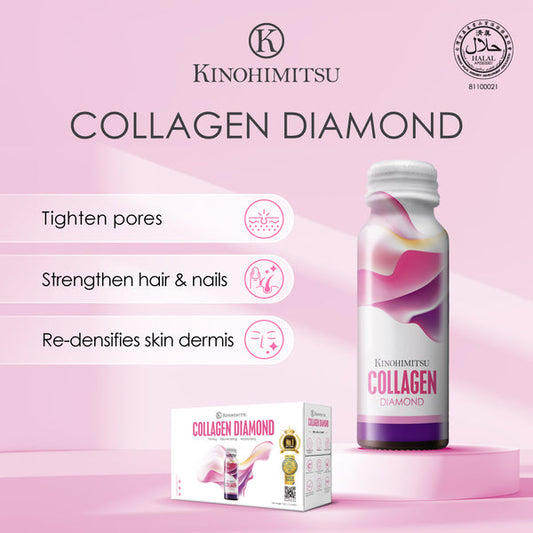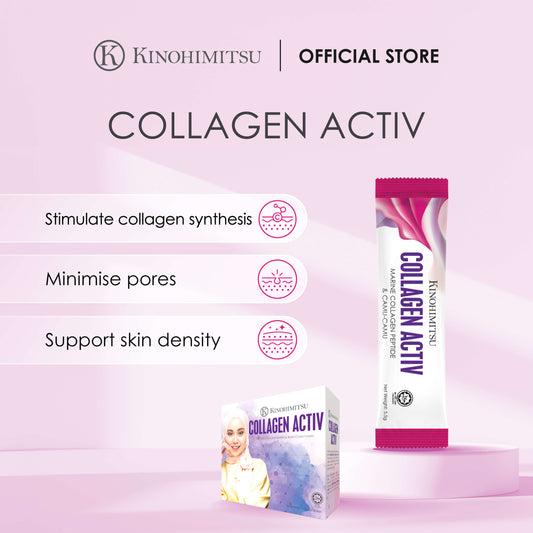
Whitening Drip Side Effects: What You Need to Know

In the quest for a radiant and youthful complexion, many individuals are turning to whitening drips, but it's crucial to consider the potential whitening drip side effects before diving into treatment. Did you know that while these intravenous infusions promise quick results and glowing skin, they can also bring about unexpected reactions? As beauty trends evolve, so does the conversation around the risks associated with cosmetic procedures. This blog post will explore the common ingredients in whitening drips, their potential side effects, and what you need to know to ensure a safer experience while achieving your skincare goals.
Understanding Whitening Drips
Whitening drips are intravenous treatments that aim to lighten skin tone through a blend of vitamins, antioxidants, and other ingredients. They are popularly used in countries like Malaysia and Singapore, where beauty standards often emphasize fairer skin. But what exactly do these treatments entail, and what are the potential whitening drip side effects?
Common Ingredients in Whitening Drips
Typically, whitening drips contain a mixture of the following ingredients:
- Vitamin C: Known for its skin-brightening properties.
- Glutathione: An antioxidant that may inhibit melanin production.
- Alpha-lipoic acid: Helps in skin rejuvenation.
- Collagen: Promotes skin elasticity and reduces wrinkles.
Each of these components works synergistically to enhance the skin's appearance, but understanding their effects is crucial.
Potential Whitening Drip Side Effects
While many people may find success with whitening drips, it’s essential to be aware of the potential whitening drip side effects. These can include:
1. Common side effects:
- Mild pain at the injection site
- Nausea or dizziness
- Allergic reactions to ingredients
2. Rare but serious side effects:
- Severe allergic reactions (anaphylaxis)
- Kidney damage, particularly if detoxifying agents are involved
- Electrolyte imbalances from excessive treatments
Factors Influencing Side Effects
Individual responses to whitening drips can vary significantly. Factors that may influence the occurrence of side effects include:
- Underlying health conditions: Pre-existing conditions like kidney issues can exacerbate side effects.
- Medications: Certain medications might interact negatively with the ingredients in the drip.
- Personal allergies: People with known allergies to vitamins or other components should approach these treatments with caution.
Mitigating the Risks
To minimize the whitening drip side effects, consider the following recommendations:
- Pre-treatment consultations: Always consult with a qualified medical professional to assess your health.
- Choose licensed practitioners: Ensure that the practitioner administering the treatment is certified and experienced in administering IV therapies.
For more detailed information on safety standards regarding IV treatments, you may visit Mayo Clinic.
Recommendations for Safe Usage
To ensure safe usage of whitening drips, adhere to these guidelines:
- Dosage guidelines: Follow the recommended dosage and do not exceed it.
- Frequency of treatments: Limit treatments to the advised schedule to avoid overexposure to the ingredients.
Alternatives to Whitening Drips
If you're hesitant about the potential whitening drip side effects, there are safer alternatives you may consider:
- Natural remedies: Ingredients like lemon juice and aloe vera may offer milder skin whitening effects.
- Other cosmetic treatments: Options such as chemical peels and laser treatments often have fewer systemic side effects.
In conclusion, it's crucial to weigh the benefits and risks before opting for whitening drips. Being informed about potential whitening drip side effects will empower you to make safer and more effective beauty decisions.
Factors Influencing Side Effects
Understanding the factors that influence whitening drip side effects is essential for anyone considering this treatment. Individual responses can vary greatly, and several elements come into play.
1. Individual Health Factors
- Pre-existing health conditions: Conditions such as diabetes, heart problems, or kidney disease can magnify the risk of adverse effects. It’s critical to disclose your full medical history to your provider.
- Age and gender: Younger individuals may metabolize substances differently than older adults, and hormonal differences can also play a role in side effects.
2. Medication Interactions
- Current medications: Certain medications, particularly those affecting the liver or kidneys, may interact negatively with the ingredients in whitening drips. Always inform your healthcare provider about any over-the-counter or prescription drugs you are taking.
3. Allergies and Sensitivities
- Ingredient allergies: Some individuals may have allergies to common components such as vitamin C or glutathione. Testing for known allergens beforehand can prevent serious reactions.
- Sensitivity to intravenous treatments: Some people may experience heightened reactions to IV treatments, regardless of the specific contents of the drip.
Mitigating the Risks
To reduce the likelihood of experiencing whitening drip side effects, consider the following strategies:
- Consult healthcare professionals: Schedule a thorough consultation before treatment to discuss your concerns and medical history.
- Choose a reputable clinic: Opt for clinics with certified professionals who follow safety guidelines and protocols. This reduces the chance of complications due to improper application.
For additional resources on safe cosmetic treatments, you can visit the American Society of Plastic Surgeons.
Recommendations for Safe Usage
When considering whitening drips, adhering to these safety guidelines can minimize potential side effects:
- Follow expert recommendations: Always stick to the dosage and frequency advised by your practitioner.
- Stay hydrated: Proper hydration can help your body process the ingredients more efficiently, minimizing the risk of kidney strain.
Exploring alternatives and being informed about the factors affecting whitening drip side effects empowers you to make safer choices in your skin-care journey. Remember, your health and safety should always come first.
Recommendations for Safe Usage
When considering whitening drips, following specific guidelines can significantly reduce the risk of whitening drip side effects. Safety should always be a priority, and understanding how to properly use these treatments is crucial for a positive experience.
1. Consultation Prior to Treatment
- Comprehensive Health Assessment: Before getting a whitening drip, it is essential to have a full medical assessment by a qualified healthcare provider. This will help identify any potential risks based on your medical history and current health conditions.
- Discuss Expectations: Clearly communicate your desired outcomes and any concerns you may have regarding side effects. A reputable practitioner will guide you through the process and set realistic expectations.
2. Choosing the Right Provider
- Verify Credentials: Make sure that the clinic or practitioner is licensed and has experience in administering intravenous treatments.
- Read Reviews: Look for patient reviews and testimonials to gauge the quality of care and effectiveness of the treatment.
- Inquire About Safety Protocols: The clinic should adhere to stringent safety protocols, including cleanliness and proper handling of equipment.
Usage Guidelines
To minimize the chances of encountering whitening drip side effects, consider these usage guidelines:
- Adhere to Recommended Dosage: Following the dosage and treatment frequency prescribed by your healthcare provider is essential. Straying from these recommendations can lead to complications.
- Allow Time Between Treatments: Avoid over-scheduling treatments. Giving your body adequate time to recover can help reduce the risk of side effects.
Post-Treatment Care
- Stay Hydrated: Proper hydration before and after treatment can aid in recovery and help your body process the ingredients more efficiently.
- Monitor for Side Effects: Pay close attention to your body’s response after the treatment. If any unusual symptoms occur, contact your healthcare provider immediately.
For further guidance on cosmetic procedures, consider visiting the American Academy of Dermatology. They provide comprehensive resources on skin health and safety practices.
By implementing these recommendations and understanding how to navigate potential whitening drip side effects, you can make informed choices that prioritize your well-being while still achieving your beauty goals.
Alternatives to Whitening Drips
While whitening drips have gained popularity for their potential skin benefits, many individuals may seek alternatives due to concerns about whitening drip side effects or the desire for less invasive treatments. Here are some options worth considering:
1. Natural Remedies
- Lemon Juice: Known for its natural bleaching properties, lemon juice can lighten skin when applied regularly. It is rich in vitamin C, which is beneficial for skin health.
- Aloe Vera: A well-known skin soother, aloe vera can help reduce pigmentation and promote a more even skin tone without harsh side effects.
- Yogurt and Turmeric Mask: A mixture of yogurt and turmeric can provide a natural glow, thanks to the lactic acid in yogurt and the anti-inflammatory properties of turmeric.
2. Topical Treatments
- Vitamin C Serums: These products can brighten the skin and reduce the appearance of dark spots, similar to some ingredients found in whitening drips.
- Retinoids: Available over the counter or by prescription, retinoids can improve skin texture and enhance firmness while lightening hyperpigmentation.
3. Professional Cosmetic Treatments
- Chemical Peels: These treatments remove the outer layer of skin to reveal a brighter, smoother complexion. They can be custom-tailored according to skin type and desired results.
- Laser Treatments: Laser therapy targets pigmentation directly and can lead to significant improvements without systemic side effects associated with whitening drips.
Choosing the Right Alternative
When opting for alternatives, consider the following tips:
- Consult a Skincare Professional: Speak with a dermatologist or licensed aesthetician to discuss the safest and most effective options for your skin type.
- Research Products Thoroughly: Look for well-reviewed products with proven effectiveness and minimal risks.
For more in-depth information on skincare options, you can visit the American Academy of Dermatology, which offers extensive resources on skin health and treatments.
By exploring alternatives to whitening drips, you can find effective and lower-risk ways to achieve your skin goals while minimizing the potential for whitening drip side effects.
Conclusion
When considering whitening drips, being informed about the potential whitening drip side effects is crucial for making safe and effective choices. While these treatments may offer the allure of quick results in achieving a lighter skin tone, it’s essential to weigh the benefits against the risks.
Key Takeaways:
- Understand the Ingredients: Familiarize yourself with the components of whitening drips, as well as their functions and potential side effects.
- Consult Healthcare Professionals: Always have an in-depth discussion with qualified professionals about your health status, desired outcomes, and concerns.
- Prioritize Safety: Follow recommended guidelines and ensure treatments are conducted in a regulated environment to minimize risks.
- Consider Alternatives: Explore natural remedies and topical treatments that can brighten the skin with potentially fewer side effects.
Remember, every person’s skin is unique, and what works for one individual might not be suitable for another. Emphasizing personalized care and making informed decisions will help you achieve your skincare goals without compromising your health.
For additional resources on safe skincare practices, check out the Mayo Clinic and visit Kinohimitsu for information on safe beauty treatments and products. Their website offers comprehensive information that can guide you in your beauty journey while prioritizing your well-being.
Understanding Whitening Drips
Whitening drips have become increasingly popular as a skincare treatment aimed at enhancing skin tone and achieving a brighter complexion. This intravenous method involves transferring a mix of vitamins, antioxidants, and other components directly into the bloodstream for swift absorption. However, it is essential to fully comprehend how whitening drips work and the potential whitening drip side effects before trying them.
How Whitening Drips Work
The core idea behind whitening drips lies in their ability to deliver active ingredients directly into the body, bypassing the digestive system. This method is touted for its faster and more effective results. Key components in whitening drips may include:
- Vitamin C: A powerful antioxidant that helps in brightening skin and reducing melanin production.
- Glutathione: A potent antioxidant known to detoxify and lighten the skin, sometimes used for its skin-whitening properties.
- Alpha-lipoic Acid: An antioxidant that is believed to rejuvenate the skin and mitigate signs of aging.
Potential Benefits
Many individuals report positive outcomes from whitening drips, such as:
- Improved skin tone
- Enhanced skin elasticity
- Reduced signs of aging
Despite these benefits, it is crucial to maintain a realistic expectation regarding results and be informed about the potential side effects.
Learning About Whitening Drip Side Effects
While whitening drips may sound appealing, being aware of potential whitening drip side effects is vital to making informed decisions. Common side effects that some individuals may experience include:
- Irritation at the Injection Site: Pain, swelling, or redness where the needle was inserted.
- Allergic Reactions: Some may experience an allergic reaction if they are sensitive to any of the ingredients used.
- Nausea or Dizziness: Feelings of nausea or light-headedness can occur in some cases.
For more comprehensive insight into the effects of intravenous treatments, consider visiting Cleveland Clinic.
In summary, while whitening drips can offer appealing benefits for skin enhancement, it’s critical to understand their mechanisms, expected results, and the potential whitening drip side effects to ensure a safe and effective treatment plan.
Common Ingredients in Whitening Drips
Understanding the ingredients in whitening drips is crucial to grasping their effects and potential whitening drip side effects. Each component plays a unique role in the treatment’s efficacy while also presenting possible risks.
Key Ingredients
1. Vitamin C
- Functions: Acts as an antioxidant, helping to brighten the skin and reduce dark spots.
- Benefits: Promotes collagen production, improving skin texture and firmness.
2. Glutathione
- Functions: Primarily known for its detoxifying properties and ability to inhibit melanin production.
- Benefits: Often touted as a skin-whitening agent, contributing to a fairer complexion.
3. Alpha-lipoic Acid
- Functions: Works as an antioxidant that can regenerate other antioxidants and promote skin rejuvenation.
- Benefits: Helps reduce fine lines and wrinkles while providing anti-aging effects.
4. Collagen
- Functions: A protein that promotes skin structure and elasticity.
- Benefits: Strengthens the skin, reducing sagging and improving overall appearance.
Possible Whitening Drip Side Effects
While these ingredients boast promising benefits, they may also lead to whitening drip side effects, particularly due to individual sensitivities or overdoses. Some side effects to consider include:
- Injection Site Reactions: Redness, swelling, or pain where the needle is injected.
- Gastrointestinal Disturbances: Nausea, diarrhea, or vomiting may occur due to the body’s reaction to high doses of vitamins.
- Allergic Reactions: Symptoms can range from mild itching to severe responses, including anaphylaxis, especially in sensitive individuals.
Mitigating Risks
To minimize the potential whitening drip side effects, consider the following steps:
- Consult a Specialist: Always seek advice from qualified medical professionals who can assess your individual health needs.
- Know Your Allergies: Inform your provider of any known allergies to ensure a safe treatment experience.
- Monitor Your Body’s Response: Pay close attention to how your body reacts after each session, and report any adverse effects to your healthcare provider.
For additional insights into the safe use of cosmetic treatments, you can visit Harvard Health for more information.
By understanding the common ingredients in whitening drips and their effects, you can make informed decisions that align with your beauty goals while safeguarding your health.
Potential Whitening Drip Side Effects

While whitening drips can effectively enhance skin tone and overall appearance, it's essential to be informed about the potential side effects. Understanding these risks can help individuals make educated decisions before undergoing treatment.
Common Side Effects
Some users may experience mild and manageable side effects, including:
1. Injection Site Reactions:
- Redness
- Swelling
- Pain or tenderness at the injection site
2. Digestive Discomfort:
- Nausea or vomiting
- Diarrhea
3. Fatigue:
- A feeling of tiredness or lethargy may occur, particularly if the body is processing high doses of nutrients suddenly.
Rare but Serious Side Effects
Although less common, some serious side effects can occur and may require immediate medical attention:
- Allergic Reactions: Symptoms may include hives, difficulty breathing, or swelling of the face, lips, or throat.
- Kidney Damage: Excessive amounts of certain vitamins, particularly glutathione, can lead to kidney strain or damage, especially in individuals with pre-existing kidney conditions.
- Electrolyte Imbalance: Disruption in the balance of minerals in the body, which can lead to severe complications if not addressed.
Mitigating Risks
To lessen the risk of experiencing whitening drip side effects, consider the following precautions:
- Pre-Treatment Evaluation: Ensure a thorough evaluation of your medical history and current health status by a qualified healthcare provider.
- Choose a Certified Practitioner: Opt for clinics staffed with experienced medical professionals who follow strict safety protocols.
- Stay Informed: Discuss any allergies or previous reactions to intravenous treatments with your practitioner.
For further details and safety information regarding cosmetic treatments, the American Society of Plastic Surgeons offers a wealth of resources designed to inform patients effectively.
In conclusion, being aware of the potential whitening drip side effects empowers individuals to make informed decisions about their skincare while prioritizing safety and health.
What are whitening drips?
Whitening drips are intravenous therapies designed to enhance skin tone and overall appearance by delivering a combination of vitamins, antioxidants, and other beneficial ingredients directly into the bloodstream. They are commonly used for achieving a fairer complexion and improving skin quality.
How long do the effects of whitening drips last?
The duration of the effects from whitening drips can vary from person to person, depending on individual skin types, the ingredients used, and the frequency of treatments. Generally, results may last anywhere from a few weeks to several months, but maintenance sessions are often recommended to sustain the desired effects.
Are there any age restrictions for receiving whitening drips?
Most clinics recommend that patients seeking whitening drips be at least 18 years old, as younger skin may not require such treatments. However, it's essential to consult with a healthcare professional to discuss whether whitening drips are suitable and safe based on individual circumstances.
How can I minimize the risk of side effects?
To minimize the risk of whitening drip side effects, it is crucial to consult with a qualified healthcare provider for a thorough assessment of your medical history and current health status. Additionally, choosing a reputable clinic with certified practitioners and following their guidelines regarding dosage and treatment frequency can significantly reduce potential risks.
What should I do if I experience side effects?
If you experience any side effects after receiving a whitening drip, it is important to monitor your symptoms closely. For mild issues like injection site irritation, applying a cold compress may help. However, if you notice severe reactions such as difficulty breathing or swelling, seek immediate medical attention and inform your healthcare provider about your experience.





















